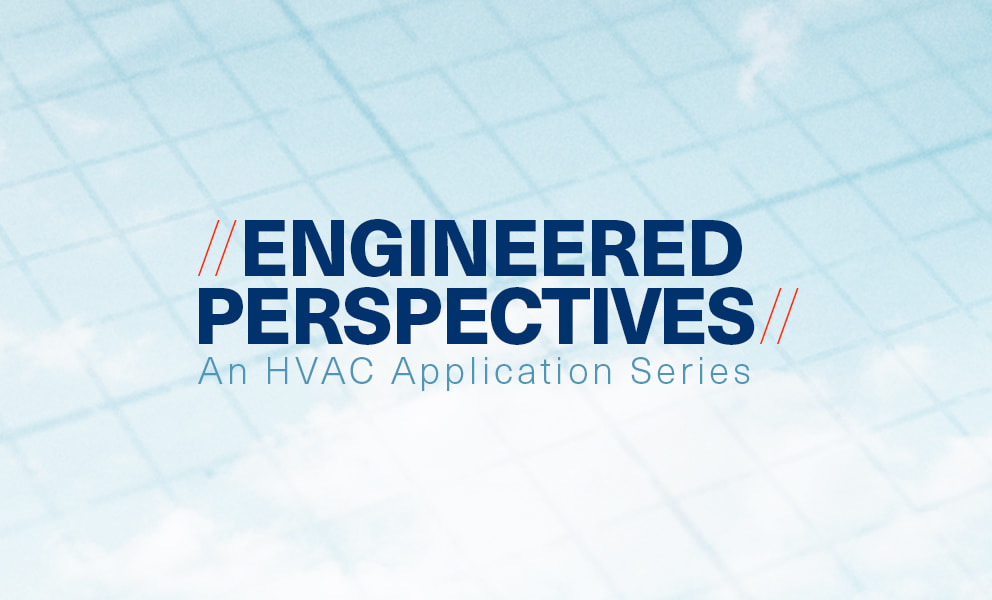4 Reasons VRF is the HVAC Solution for your Building
Variable Refrigerant Flow (VRF) is the ideal HVAC technology for facilities that need an energy-efficient solution. Unlike other options, VRF systems can produce 30 to 40 percent energy savings, which is significant when 50 percent of a building’s energy usage comes from its HVAC system.1
VRF saves energy because of the way it operates. Essentially, VRF is a ductless system that distributes refrigerant to different zones through refrigerant piping. VRF can control the amount of refrigerant flowing to each zone at all times to ensure total comfort and energy efficiency.
Applications where zoning is required will most benefit from a VRF system; however, there are many things to consider when deciding if VRF is the solution for your building. Here are four reasons VRF is a smart option:
1. Your building requires some zones to cool while others warm up
VRF systems include multiple indoor units connected to one outdoor module, at minimum. The placement of the indoor units determines the different zones. More outdoor modules can be installed if your building requires more zones than one outdoor module can serve. When the VRF system is active, refrigerant is cycled from the outdoor module to the indoor units based on each zone’s precise needs.
VRF can simultaneously heat and cool a building by absorbing residual heat when cooling one zone and redirecting it to another zone, resulting in less energy waste and more productivity. A building that may need heat for its perimeter and air conditioning for centralized rooms, for example, would strongly benefit from this dual feature.
2. Your building experiences abrupt temperature changes
Instead of cycling on and off, VRF systems feature a variable-speed compressor that operates continuously and at varying speeds to match demand. The variable-speed compressor works with a branch controller to optimize energy consumption in the system. The branch controller measures and delivers refrigerant to each zone, adjusting refrigerant flow, as needed, to maintain desired temperature.
A comfortable environment is not only important to keeping energy costs low, but also for the productivity of building workers. Research shows that achieving the ideal building temperature improves worker performance. Cornell University researchers conducted a study that found employees made 44 percent more errors in cold temperatures than in warm.2
3. You need an HVAC solution with a lower total cost of ownership.
VRF might have a higher upfront cost compared with traditional ducted HVAC systems, but it could save a building owner money in two key areas over time. First, VRF requires minimal maintenance since it runs based on demand, limiting wear and tear. Because the indoor units operate independently, the shutdown of one doesn’t affect the rest.
Second, VRF — specifically two-pipe systems — takes little time to install. Two-pipe VRF systems are compact, to simplify the installation process. Also, its ability to fit in existing buildings eliminates the need to destruct and reconstruct, saving time and costs.
4. Your current building design or design plans require a ductless system.
VRF can help reclaim approximately 10 percent of a building’s space occupied by conventional HVAC systems.1 To start, the indoor units and outdoor modules are compact to accommodate room design and space limitations. The indoor units come in multiple options — wall-mounted, ceiling-recessed and suspended, and floor-standing — for versatile placement.
For new buildings, ductless VRF systems and smaller refrigerant piping accommodate higher ceilings, more natural light and modern building designs. Because less space is needed between floors, VRF is a good fit for older buildings not originally built with HVAC in mind, building renovations not equipped with ductwork to start and new buildings with innovative design plans.
If VRF fits your needs, it can be retrofitted to your current system by combining with other products and controls — even those with different types of systems. An HVAC system specialist can help configure the right system for your space, so contact a specialist to find the best energy-efficient HVAC solution for you.
1City Multi® VRF: A New Approach to Zoning Efficiency. Mitsubishi Electric Inc. 2016
2Cornell Chronicle. Study links warm offices to fewer typing errors and higher productivity. Susan S Lang. October 19, 2004. http://news.cornell.edu/stories/2004/10/warm-offices-linked-fewer-typing-errors-higher-productivity . Accessed May 9, 2018.



































































































